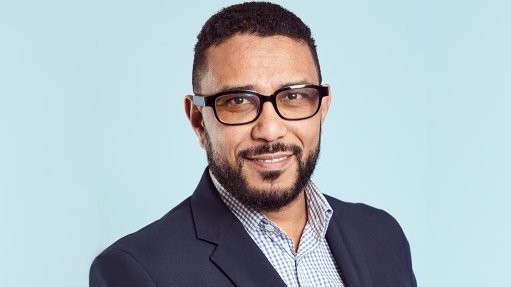
Nordex Energy South Africa MD Compton Saunders
European wind turbine original equipment manufacturer (OEM) Nordex says South Africa remains a key market despite the disappointment of the country’s most recent renewables bidding round when not a single wind project advanced to preferred-bidder status, owing to grid constraints in the Cape provinces.
Nordex Energy South Africa MD Compton Saunders tells Engineering News that the development has prompted a reassessment of the country’s future wind-turbine potential by the company, which has an estimated 32% domestic market share.
That exercise confirmed there to be ongoing growth potential, albeit at a slower pace than would have been the case had the 3 200 MW allocated to wind during the sixth bid window been procured.
The assessment also indicated that the South African wind market is no longer likely to be dominated by public procurement, with the Renewable Energy Independent Power Producer Procurement Programme (REIPPPP) poised to experience competition from private procurement initiatives.
In fact, this reality came into sharp relief during the most recent bid window, when private developers moved swiftly to secure access to the very same grid capacity that the 23 wind bidders were proposing to use for their REIPPPP-linked projects.
Saunders insists that Nordex is entirely “agnostic” regarding whether procurement is public or private in nature. Nevertheless, the prospect that private projects will play at least an as important role as the REIPPPP in future has implications for the OEM.
For instance, private developers are likely to prioritise speed and cost of deployment rather than the community upliftment, transformation and localisation goals that have also been key considerations for REIPPPP bidders.
This changing dynamic is likely to result in Nordex adopting a more flexible stance regarding the use of either steel or concrete towers, for instance.
The company has hitherto pioneered concrete towers under the REIPPPP, largely given the solution’s local-content advantages and relative jobs intensity.
Analysis conducted by the company shows that concrete towers, which are typically manufactured at facilities set up in close proximity to wind-farm sites, have three times more value to the domestic economy than steel towers and create significantly more jobs.
Saunders stresses that Nordex will continue to deploy concrete towers, including on private wind projects. But the decision to use concrete or steel will be based primarily on logistics and commercial considerations, including the prevailing steel price, rather than on attempts to increase the use of labour or the local content of a project.
“That’s not to say private developers won’t also insist on local content, but the procurement rules will be project-specific,” Saunders explains.
This could also have implications for the yet-to-be-finalised South African Renewable Energy Masterplan, or SAREM, which aims to create industrial activity around South Africa’s renewables roll-out and which was initially conceived when the REIPPPP was the dominant procurement mechanism.
Saunders says the conditions for higher localisation remain consistent levels of procurement, regardless of whether this arises from private or public programmes.
Therefore, the failure of wind projects to progress during the most recent REIPPPP bidding round is likely to result in some reticence among OEMs to consider local investments, particularly given that OEMs require consistent volumes and procurement rules and this is not the first disruption experienced in the South African market.
The REIPPPP programme was disrupted for seven years between 2014 and 2021 after the previous Eskom leadership refused to sign power purchase agreements for projects procured in 2014, leading to the closure of some local manufacturing capacity, including a wind tower facility in the Eastern Cape.
“Fortunately we have a fairly well-established team in South Africa that is able to understand the dynamics and look through the challenges to see the opportunities that still exist.
“Therefore, we remain convinced that this market will continue to grow and we are positioning ourselves for that growth, no matter what form it takes.”